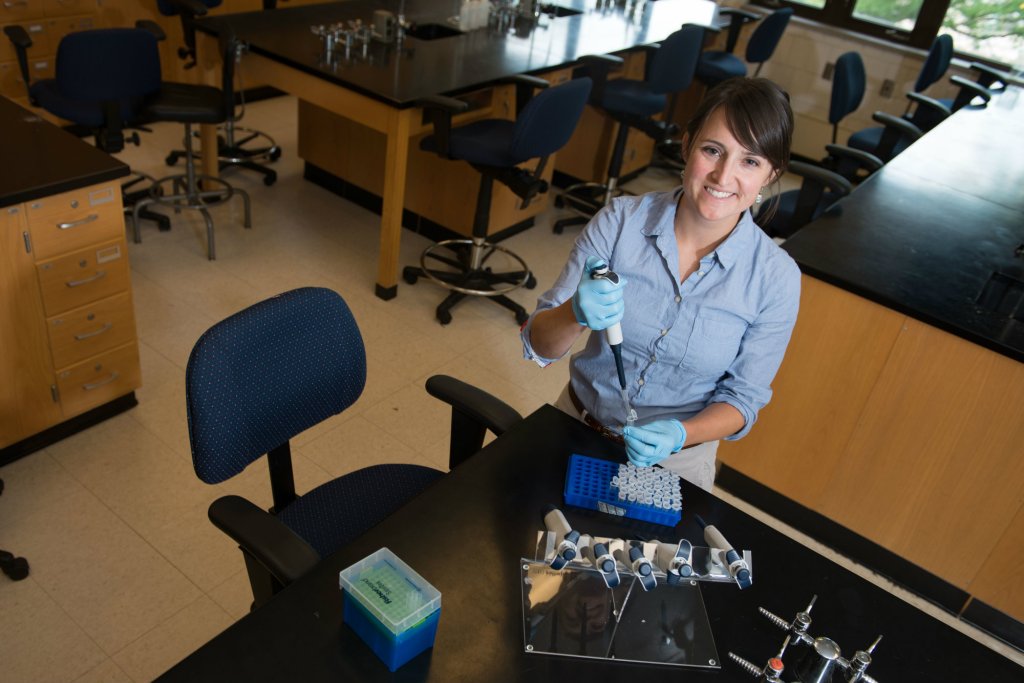What do DEET, caffeine, ibuprofen and TCEP flame retardant all have in common?
These appear to be the most prevalent contaminants in swimming pools, according to research by Dr. Laura Suppes and her students at University of Wisconsin-Eau Claire.
Among the highlights of this important study: DEET was present in 100% of the 31 pools in the sample, even in indoor pools during winter. Equally alarming: More than half of pools don’t make showers available, and nearly half don’t have toilets.
As Suppes has known throughout her career, beginning when she inspected pools as an intern with a country health department, there’s a lot of work to be done learning about the contents of pool water.
Fortunately, she is perfectly comfortable in the deep end of this endeavor.
An environmental public health scientist, assistant professor, and private consultant to clients such as the National Environmental Health Association and the Centers for Disease Control and Prevention, Suppes loves the thrill of discovery and the problem-solving process involved with research. If it will prevent disease and help people live healthier lives, all the better.
Her education clearly led to this destiny. She earned a bachelor’s in Environmental Public Health at the UW-Eau Claire, then studied public health policy and administration at the University of Minnesota with an emphasis in global health. Finally, she has a doctorate in environmental health sciences and a certificate in water policy studies from the University of Arizona.
Her findings, peculiar and even disturbing at face value, raise new questions about the causes and prevention of pharmaceutical and personal care products (PPCPs) in pools — including skin, hair, swimwear and, yes, urine. But she’s hopeful her published recommendations may be used for future guidelines that would be adopted by health departments. Top on her list now: require hygiene facilities in newly constructed aquatics centers, mandate toilet breaks for swim teams and groups, and adopt the Model Aquatic Health Code.
Her work points to more puzzles looking for a solution. “The question is … once these PPCPs accumulate in our bodies, how are these chemicals reacting in our bodies together, and what’s that doing to our health?” she says. “Unfortunately, there really are not great answers yet.”
Sparking more young, inquisitive minds is her answer to finding more answers. Her role collaborating with undergraduates in her alma mater’s lab gives her personal satisfaction, particularly for someone who comes from a family of instructors. “I love teaching students who are in the same program I was in, knowing they feel just as passionate about environmental health,” she says.
